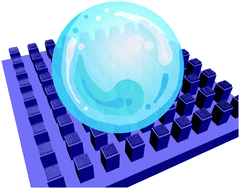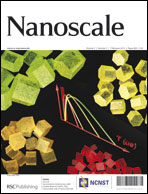Herein, we describe a simple fabrication procedure for creating artificial hierarchical micro/nanopillars on silicon substrates that allows an effective, precise control of the interfacial adhesion and surface hydrophobicity. These well-defined hierarchical micro/nanostructures have four possible wetting states: Cassie–Cassie (C–C), Cassie–Wenzel (C–W), Wenzel–Cassie (W–C) and Wenzel–Wenzel (W–W). By controlling the critical height of the micro/nanopillars, it is possible to fabricate hierarchical micro/nanostructures in these four states. Thus, the hierarchical superhydrophobic surfaces proposed and fabricated in this study are promising for mimicking either lotus leaves with low adhesion or rose petals with high adhesion.
You have access to this article
 Please wait while we load your content...
Something went wrong. Try again?
Please wait while we load your content...
Something went wrong. Try again?


 Please wait while we load your content...
Please wait while we load your content...